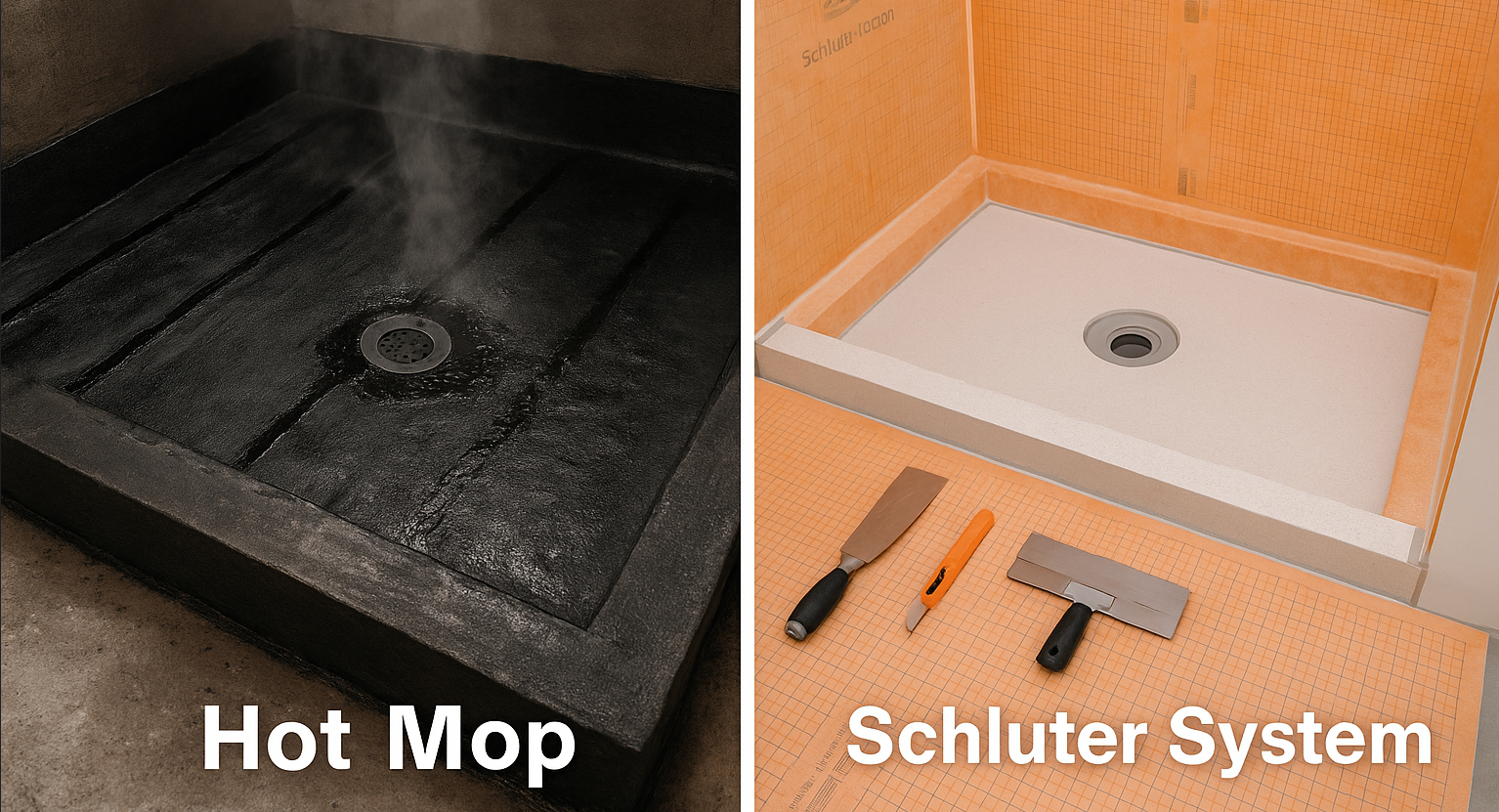Still Hot Mopping in 2025? Why We’ve Moved On — for Your Health
In Southern California, the hot mop shower pan is practically tradition. For decades, builders have used it as their go-to waterproofing method. It’s cheap. It works. And it’s what everyone’s always done.
But just because something works doesn’t mean it’s the right choice. Especially when it comes to health.
As a builder, I’ve been in countless homes from remodels, to new construction, and multi-million-dollar spec builds. And I still see it all the time: homes priced at $4 to $5 million, packed with high-end finishes and designer details, being built with a layer of boiled tar under every shower.
Let’s talk about why that’s a problem and why we’ve made the switch to something better.
What Is Hot Mopping, Exactly?
If you’ve never witnessed a hot mop install, picture this: a guy rolls a giant kettle of liquid asphalt into your home, heats it until it’s boiling, and mops it across the bathroom floor between layers of roofing felt.
It’s a messy, smoky, toxic process. And when I say toxic, I mean seriously toxic.
The VOCs (volatile organic compounds) released during installation are so intense that everyone must leave the house while it’s happening. But here’s the kicker: the off-gassing doesn’t stop once the tar cools. Asphalt continues to release VOCs for years, sometimes decades.
Now imagine stepping into that shower every morning. The steam opens your pores. The heat releases more vapor from the materials below the tile. And day after day, your body absorbs a little more of whatever is lingering beneath the surface.
Why Is This Still Happening?
Because it’s cheap. And familiar. That’s it.
Ask around and you’ll hear the same thing: “It’s been working for 30 years.” And sure, it technically works, until it doesn’t. Tar cracks. Corners fail. And moisture finds a way through. But even before failure, there’s a deeper issue: what are we building into the air people breathe and the water they bathe in?
Builders spend thousands on luxury tile and plumbing fixtures, only to seal it all over a base layer of highway-grade roofing tar. I’ve watched developers pour millions into curb appeal and designer finishes while still cutting corners on what lies behind the walls.
What We Use Instead: Schluter Waterproofing Systems
We made the decision to eliminate hot mop from all our builds. In the last 8 homes we’ve built since writing this, we have installed Schluter waterproofing systems in every shower, tub surround, bathroom and laundry room floors to protect and give a longer life to the home.
Here’s why:
Zero VOCs — Schluter products are completely non-toxic and safe to install while other trades are working on-site.
Precision Installation — Our team has been professionally trained by Schluter to install their underlayments, trays, and waterproofing membranes.
Better Engineering — Schluter kits include pre-sloped shower pans, waterproof corners, and integrated drains to prevent human error and ensure long-term performance.
It’s not just cleaner, it’s smarter. And it’s part of our commitment to building healthy homes, not just beautiful ones.
Behind the Tile: What Are You Really Standing On?
Most homeowners never think to ask what’s under their tile. That’s understandable. It’s not something you can see. But when you’re standing barefoot in a hot shower, day after day, what’s behind the wall matters.
Because that beautiful spa shower with imported tile might be hiding something that off-gasses into your lungs and skin every single time you use it.
One Final Question
If you were to step into a hot shower, one that opens your pores and fills with steam, and that shower was built over a layer of tar and decades of lingering VOCs… what effect do you think that has on your body over time?
We believe a healthy home is more than energy-efficient appliances or stylish finishes. It’s built with intention, from the ground up and it starts in places you’ll never see.
That’s the difference. And that’s why we’ll never hot mop another shower.
